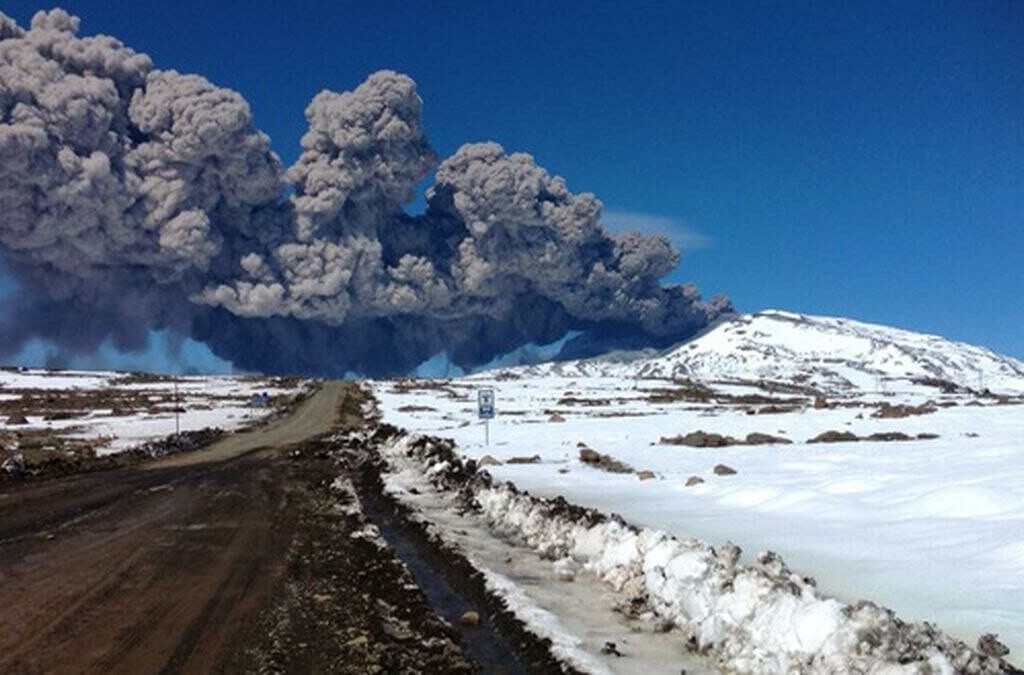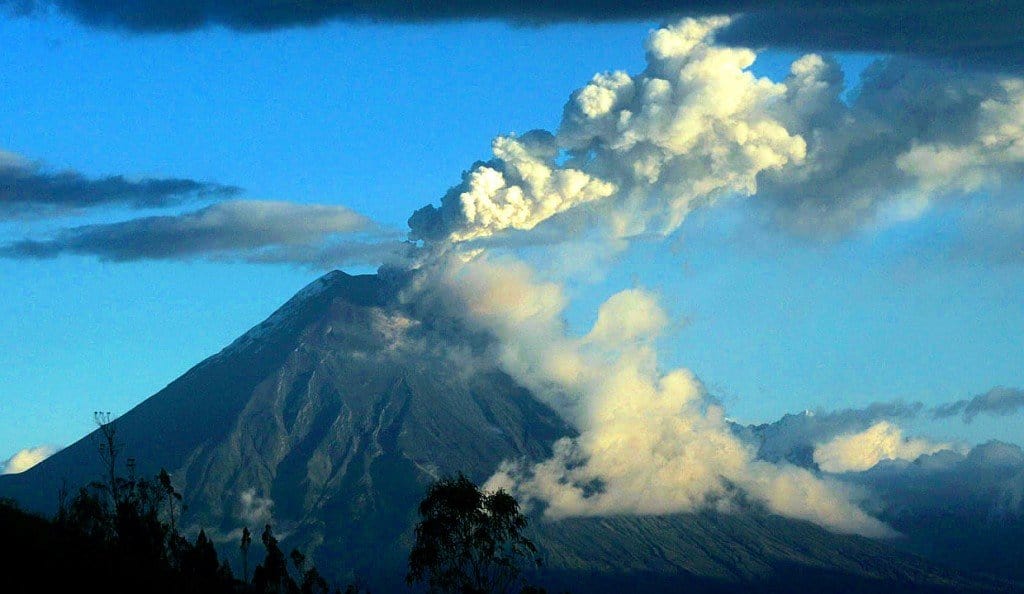The December 2012 eruption of the Copahue volcano marked a significant event in the study of volcanic activity in the Neuquén region, Chile. Here is a detailed review of the events and their impacts, based on confirmed data and reports from relevant authorities.
Onset of Volcanic Activity at Copahue
Located in the northwest of Neuquén Province, Copahue volcano witnessed a significant increase in activity on December 22, 2012. This awakening of the geological giant not only captured the attention of local residents and regional authorities but also drew the eyes of scientists and volcanologists worldwide.
According to Chile’s National Emergency Network, the eruptive activity primarily affected areas between Chile’s Eighth and Ninth Regions, near the northern shore of the Ralco dam.
Reports from La Mañana de Neuquén noted that the smoke column reached approximately 850 meters high, with wind direction carrying the ash plume toward the town of Zapala. The activity began around 9:15 AM local time.
This event disrupted the calm of the area and triggered intensive monitoring by the relevant authorities.
Evolution of the Activity and Precautionary Measures
Following the eruption’s onset, Copahue’s activity showed significant fluctuations, necessitating constant vigilance and effective communication from authorities to local residents and tourists in the region.
Decrease in Activity and Evacuation Rumors Dismissed
Despite initial speculations about possible evacuations, a notable decrease in volcanic activity allowed authorities to dismiss such measures. Guillermo De Cesco, owner of Hosteria Hualcupen, confirmed that there were no evacuations and that hotel occupancy was at full capacity.
Many tourists chose to stay in the area, drawn by the natural phenomenon, albeit under the supervision and safety recommendations issued by the authorities.
Copahue’s mayor, Oscar Mancegosa, reiterated in conversations with media outlets like C5N, that as of 1:00 PM that day, there had been no lava fall or large stones, although a considerable amount of ash was present, fortunately remaining at a considerable height, minimizing risk to people and infrastructure.
Maintaining Yellow Alert
Despite the reduction in visible activity, authorities decided to maintain a yellow alert, indicating that the volcano could increase its activity without warning. This decision underscores the unpredictability of volcanic phenomena and the need for constant vigilance.
This period of relative calm was used to strengthen information and prevention measures among the local population and visitors, ensuring everyone was well-informed about how to act in case of increased volcanic activity.
Special Report on Volcanic Activity by SERNAGEOMIN
The National Geology and Mining Service (SERNAGEOMIN) along with the Southern Andes Volcanological Observatory (OVDAS), played a crucial role in monitoring the Copahue volcano during and after the December 2012 eruption. Their reports and analyses provided essential data to understand the scale and characteristics of the volcanic activity.
Analysis of Seismic Signal
On December 22, starting at 10:45 AM local time, an intensification of the seismic signal was detected at stations around the volcano. This tremor signal, dominated by low frequencies, reached high levels, with a maximum of 49 cm² measured with surface waves.
This increase in seismic activity signaled a substantial change in the volcano’s behavior, requiring a swift and precise response from observers and authorities.
Observations of the Gas and Ash Column
The tremor signal correlated with an increase in gas and ash emissions resulting in the formation of a dark and dense column, rising up to 1.5 km and extending approximately 13 km to the southeast.
These observations suggested the presence of an extensive hydrothermal system within the volcanic structure, which may have influenced the nature of the eruption, primarily classified as phreatic.
Continuous Assessment and Alert Level Change
Due to these observations and the continuous emission of ashes and gases, SERNAGEOMIN adjusted the volcanic alert level to orange. This change reflected the potential increase in risk and the possibility of evolving into a more significant eruptive event.
The designation of an orange alert implied an even greater need for preparedness and vigilance, coordinated among various government and emergency agencies.
The efforts of SERNAGEOMIN and OVDAS were crucial in guiding risk management decisions and keeping the public informed about changes in the activity of the Copahue volcano.
These joint efforts helped minimize the impacts of the eruption and adequately prepared communities and response systems for future volcanic activities.




